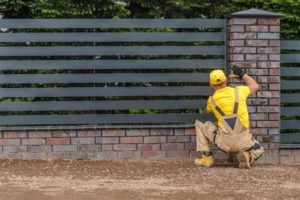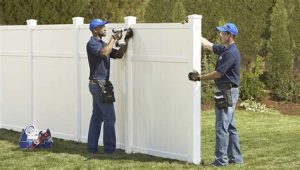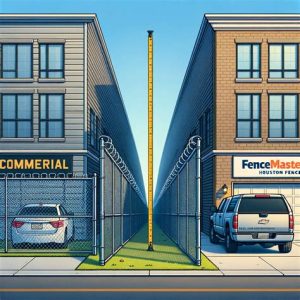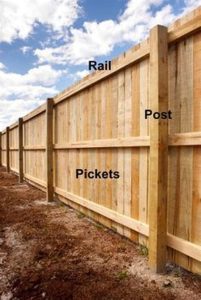Discover essential factors for choosing the right materials for your project, including budget, climate, maintenance needs, and aesthetic appeal.When it comes to fence installation, choosing the right materials is crucial for ensuring both functionality and visual appeal. Your fence serves as a boundary, a security feature, and an essential element of your property’s overall aesthetic. With a plethora of material options available—from classic wood to modern vinyl and sturdy metal—making an informed decision can feel overwhelming. This blog post will guide you through the critical considerations to take into account, including determining your budget, understanding the pros and cons of different materials, and evaluating how climate and weather conditions might impact your choice. Additionally, we’ll touch on maintenance requirements and aesthetic appeal to help you create a fence that not only meets your practical needs but also enhances your outdoor space. Let’s dive in and make the fence installation process simpler and more successful!
Determining your budget
When planning to install a fence, one of the most crucial steps is determining your budget. This budget will guide your material choices, dimensions, and overall design of the fence.
- Material costs: Different materials come at varying price points. Wood, vinyl, metal, and chain-link each have their own associated costs that can significantly affect your overall budget.
- Labor costs: If you choose to hire professionals for installation, labor costs can add up quickly. It is essential to account for these costs when setting your budget.
- Permitting fees: Some locations require permits for fence installation, which can incur additional fees. Make sure to check local regulations and factor these into your budget.
- Maintenance costs: Consider the long-term costs of maintaining your fence. Some materials require more upkeep than others, impacting your overall financial commitment.
Another important aspect of determining your budget is being realistic about the quality and longevity you expect from your fence. While it may be tempting to opt for the cheapest option, often this leads to higher costs down the line due to repairs or replacements.
Setting a clear budget also means prioritizing features that are most important to you. Do you value aesthetic appeal above all else, or are concerns about durability and maintenance more pressing? These priorities will help in allocating your budget effectively.
Understanding different material options
When it comes to selecting the right materials for your fence installation, there are a variety of options available, each with its own advantages and disadvantages. The most common materials used for fences include wood, vinyl, metal, and composite.
Wood is a classic choice known for its natural beauty. It offers versatility in design and can be easily customized with stains and paints. However, wood requires regular maintenance and is susceptible to rotting, pests, and weather damage. It is important to consider your local climate when opting for wood.
Vinyl fencing has gained popularity due to its durability and low maintenance. It is resistant to fading, cracking, and pests, making it an excellent long-term investment. However, it may not offer the same aesthetic appeal as wood, and color options can be somewhat limited.
Metal fences, such as aluminum and wrought iron, provide strength and security. They are long-lasting and require minimal upkeep. However, they can be more expensive than other options and may not provide as much privacy as wood or vinyl.
Composite fencing is made from a mixture of wood and plastic fibers, offering the best of both worlds. It is durable, low-maintenance, and environmentally friendly. While it can be costlier, it often pays off in terms of longevity and performance.
| Material | Durability | Maintenance | Aesthetic Appeal | Cost |
|---|---|---|---|---|
| Wood | Moderate | High | High | Low to Moderate |
| Vinyl | High | Low | Moderate | Moderate to High |
| Metal | Very High | Low | Moderate | High |
| Composite | High | Low | High | High |
Ultimately, the choice of material for your fence should take into account your budget, the purpose of the fence, and your aesthetic preferences.
Considering climate and weather conditions
When planning your fence installation, it is crucial to consider the climate and weather conditions of your region. Different materials can react to various weather elements, which can greatly affect their durability, maintenance needs, and overall lifespan.
- Humidity: In areas with high humidity, materials that resist moisture, such as vinyl or composite, may be preferable to prevent warping or rotting.
- Temperature variations: Extremes in temperature can impact materials differently. For instance, wood may crack in dry, hot climates, while metal fences might warp if exposed to consistent heat.
- Rainfall and snow: If you live in a region that experiences a lot of rain or snow, consider how various materials hold up under these conditions. For example, cedar wood is naturally resistant to moisture, making it a good choice for wet climates.
In addition to the material properties, it’s also important to think about how your fence will interact with seasonal changes. For instance, in regions with high winds, a tall wooden fence may require additional support to prevent damage. Meanwhile, in snowy regions, a lower fence may be advantageous to avoid heavy snow buildup that can lead to collapse.
Lastly, it can be beneficial to consult local building codes and standards related to fencing in your area, as they often take climatic conditions into account. Understanding the specific weather challenges in your location can help you select the most suitable materials for your fence installation, ensuring both durability and aesthetic appeal.
Assessing maintenance requirements
When it comes to choosing the right materials for your fence installation, understanding maintenance requirements is crucial. Different materials come with varying levels of upkeep, which can impact both your time and budget in the long run. Whether you prefer wood, vinyl, or metal, each material has unique characteristics that dictate how much maintenance will be required.
Wooden fences often require regular treatments to prevent rot, warping, and insect infestations. You may need to repaint or re-stain every couple of years to maintain their appearance and durability. On the other hand, vinyl fences are typically low-maintenance, as they do not require painting and are resistant to rot and insects. A simple wash with soap and water occasionally is usually enough to keep them looking new. Lastly, metal fences, like those made from aluminum or steel, may need occasional touch-ups to prevent rust, but they generally have a longer lifespan with minimal upkeep.
| Material | Maintenance Frequency | Recommended Actions |
|---|---|---|
| Wood | Every 1-3 Years | Repaint/Stain, Inspect for Damage |
| Vinyl | As Needed | Wash with Soap and Water |
| Metal | Every 3-5 Years | Inspect for Rust, Touch-Up Paint |
Remember, while some materials may initially seem more expensive, their longevity and lower maintenance needs can save you both time and money in the future. Always consider your priorities and lifestyle when evaluating maintenance requirements, as this will help you make the best choice for your fencing needs.
Evaluating aesthetic appeal
When choosing materials for your fence installation, one of the most important aspects to consider is the aesthetic appeal. The look of your fence contributes not only to your property’s curb appeal but also to the overall ambiance of your outdoor space. Different materials offer varying styles, colors, and textures that can complement or contrast with your home and landscape.
- Style: Different materials, such as wood, vinyl, and metal, provide distinct styles. For instance, a wooden fence can evoke a rustic feel, while a sleek metal fence gives a modern look.
- Color: The color of the fence material is crucial. Neutral tones can blend well with most environments, whereas bold colors can make a statement.
- Texture: The texture of the material can change the entire perception of the fence. Smooth surfaces may appear more formal, while rough textures could lend a casual vibe.
Before making a final decision, think about how the fence will look in all seasons. For example, a wooden fence may look fantastic in summer but could lose its charm if it fades in the winter sun or gets damaged by moisture. Therefore, factor in both the aesthetic appeal and longevity of the materials in different weather conditions.
Frequently Asked Questions
What factors should I consider when choosing materials for my fence?
You should consider factors such as durability, maintenance, aesthetics, cost, and the specific climate conditions in your area.
What are some common materials used for fencing?
Common materials include wood, vinyl, chain link, aluminum, and wrought iron, each with its own advantages and disadvantages.
How does climate affect the choice of fence materials?
Certain materials may perform better in specific climates; for example, vinyl and metal are more resistant to moisture, while wood may be prone to rotting in humid conditions.
What are the maintenance requirements for different fencing materials?
Wood requires regular staining or painting, vinyl needs occasional cleaning, while metal may require rust prevention treatments, and chain link is generally low maintenance.
Is it more cost-effective to choose cheaper materials for my fence?
While cheaper materials may reduce initial costs, they often have higher long-term maintenance and replacement costs; it’s important to consider the total cost over time.
Can I mix different materials for my fence design?
Yes, mixing materials can create a unique aesthetic and enhance functionality, but be sure to consider how they will complement each other visually and structurally.
What type of fence material is best for privacy?
For privacy, solid panels such as wood or vinyl fences are ideal, as they provide a barrier that blocks visibility from the outside.





